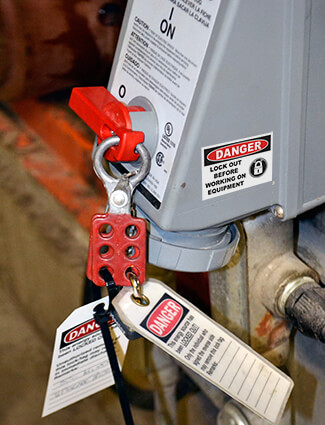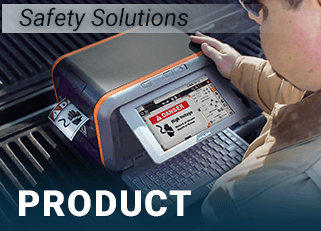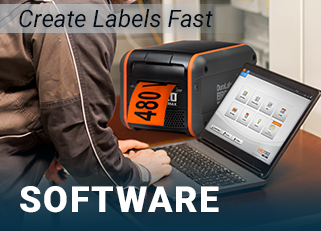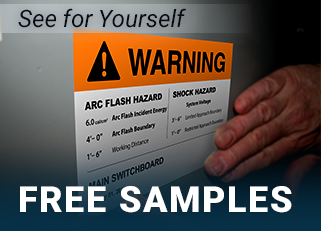Brewery Safety: Common Violations and How to Stay Safe
03
February,
2023
5 MINUTE READ

Beer has never been a bigger business in the United States than it is today. Roughly 4,000 U.S. breweries churn out ales and lagers-more than at any point since 1873, according to the Brewers Association, an industry advocacy organization-and they produced more than 24 million barrels of beer in 2015.
But the booming sales and production numbers come at a cost: Safety.
OSHA citations at breweries more than doubled between 2010 and 2015, and according to the Bureau of Labor Statistics, the number of nonfatal injuries and illnesses in breweries are up 57% since 2010.
Many of these breweries are open to the public for tours and tastings, and they typically employ several brewers who work around hazardous chemicals, in confined spaces, and with dangerous equipment. It's important to understand what brewers are being cited for and how they can stay safe on the job.
Common OSHA Violations at Breweries
Here are some of the most common citations issued to breweries-and how breweries can ensure a safe, working environment for employees and visitors alike.
Confined Space Safety
Brewers occasionally spend time cleaning, servicing, or performing maintenance inside fermenters, grain silos, mash tuns, kettles, and more. Given all this, OSHA inspectors have commonly cited breweries for not providing safe practices while working in these confined spaces.
29 CFR 1910.146, OSHA's regulation that governs permit-required confined spaces, defines a "confined space" as an area that meets the following three conditions:
- Is large enough and so configured that an employee can bodily enter and perform assigned work; and
- Has limited or restricted means for entry or exit; and
- Is not designed for continuous employee occupancy.
Where a confined space could pose a hazard to a worker, OSHA requires several safeguards to ensure confined space safety. Those include:
- Written Confined Space Permit Program: OSHA requires a written program that, among other things, identifies and evaluates the hazards that may be present, requires testing the atmospheric conditions of a confined space, and includes instructions for summoning rescue and emergency services.
- Entry Permits: Employees must receive a confined space entry permit, signed by the entry supervisor, before performing work in a confined space.
- Worker Training: Employers must provide all necessary training for workers who may enter a permit-required confined space.
DuraLabel free Best Practice Guide to Confined Spaces identifies hazards, outlines OSHA regulations, and helps employers develop procedures to prevent injuries and fatalities.
Ergonomic Injuries
Brewers may spend much of their day transporting kegs, lifting bags of grain, and performing other labor-intensive operations.
It's no surprise, then, that ergonomic violations are commonly cited under the OSHA General Duty Clause.
Given that OSHA does not yet have a specific standard regarding ergonomics, breweries can be cited under the clause, which mandates that employers provide a workplace "free from recognized hazards that are causing or are likely to cause death or serious physical harm."
Ergonomic injuries are a recognized hazard, which means employers are at risk when they don't attempt to mitigate the dangers associated with improper lifting tasks.
Process Safety Management Violations
Most breweries rely on ammonia refrigeration to keep beer and other supplies cold. What many don't realize is that ammonia is one of the dangerous chemicals covered under 29 CFR 1910.119, OSHA's regulation for preventing or minimizing the release of toxic, reactive, flammable, or explosive chemicals.
Breweries have been cited more than 50 times under the standard since 2010. The citations cover various violations, including:
- Failure to develop a process hazard analysis in accordance with the standard
- Failure to outline processes for operating and emergency use of refrigeration systems
- Failure to create written procedures and train employees to maintain relevant equipment
Learn more about the standard, developing a process hazards analysis, and more.
Lockout/Tagout Violations
 Brewers occasionally shut down fermentation tanks, mash tuns, kettles, bottling lines, and more to perform maintenance or service these machines. In doing so, they must follow specific lockout/tagout (LO/TO) practices and procedures to safeguard employees from the unexpected startup of machinery and equipment.
Brewers occasionally shut down fermentation tanks, mash tuns, kettles, bottling lines, and more to perform maintenance or service these machines. In doing so, they must follow specific lockout/tagout (LO/TO) practices and procedures to safeguard employees from the unexpected startup of machinery and equipment.
LO/TO violations are routinely among OSHA's most common citations each year, but breweries can take a few steps to ensure safety while performing these tasks.
- Understand LO/TO program requirements: 29 CFR 1910.147, OSHA's requirements for the control of hazardous energy, requires that employers create a LO/TO program that protects employees from all sources of hazardous energy (including electrical energy, hydraulic pressure, gravity, and heat). Download your free comprehensive Lockout/Tagout Best Practice Guide here.
- Create written procedures: OSHA requires employers to create and employ written procedures on what will be done to control hazardous energy.
Learn more about creating a lockout/tagout program that complies with OSHA requirements.
Hazard Communication Violations
Water, hops, grains, yeast, and other ingredients may all be used at various points in the brewing process, creating the need for chemical cleaning agents once the beer has been bottled, kegged, or canned.
29 CFR 1910.1200 is OSHA's regulation that governs the labeling of chemical hazards in the workplace (more commonly known as HazCom 2012). Breweries have been cited on roughly 50 occasions since 2010 for various hazard communication violations, including:
- Missing or incomplete hazard communication plans
- Missing or inadequate chemical labels and Safety Data Sheets
- Lack of effective training on handling chemicals or monitoring the presence of chemicals
DuraLabel free Best Practice Guide to HazCom 2012 Labeling helps employers understand OSHA's chemical labeling rules, provides a broad overview of HazCom 2012, and outlines the new labels.
Personal Protective Equipment (PPE) Violations
Boiling water, toxic cleaning chemicals, and hazardous vapors are just some of the hazards brewers may face on any given day. It's important that employees wear the right equipment in these scenarios, yet breweries have been cited repeatedly for not providing proper PPE, as required in 29 CFR 1910.133(a)(1). OSHA's standard for eye and face protection maintains that employers provide the appropriate gear when employees are exposed to hazards from a variety of sources.
The PPE standard outlines the types of PPE designed to protect the eyes and face, various hazard types, and requirements for when gear must be provided.
Forklift and Powered Truck Violations
Breweries rely regularly on forklifts and powered trucks to transport raw materials, move and reach equipment, and lift heavy items (such as pallets of kegs). Yet brewers have been cited numerous times in recent years for failing to train employees to safely operate forklifts and powered trucks.
OSHA's requirements for forklifts and powered trucks can be found in 29 CFR 1910.178. The standard maintains that employees receive training and evaluation before operating a powered truck. The training should consist of the following steps:
- Trainees may only operate a forklift or powered truck under the supervision of a colleague or manager equipped with the knowledge, training, and expertise to offer training. The training must be given in a manner that does not endanger any employees.
- Training must include a mix of formal instruction (including lectures, written materials, and visual presentations), practical training (including demonstrations given by the trainer and exercises undertaken by the trainee), and an evaluation of the trainee's competence.
- Training should cover numerous topics related to safely operating powered trucks, including steering, how to use controls and instrumentation, visibility, workplace conditions, and more.
Learn more about warehouse traffic safety, and grab a Best Practice Guide to Floor Marking for more on how effective floor marking can help forklift operators ensure a safer facility.
Brewery Safety Solutions
DuraLabel provides a variety of resources to help breweries ensure the safety of employees and visitors alike.
- Brush up on lockout/tagout regulations and build a custom LO/TO procedure suited to their facility with DuraLabel Electrical Safety Instant Action Guide.
- Learn more about confined spaces, forklift traffic, and other hazards with DuraLabel brewery safety infographic, which helps brewers and visitors stay safe in hazardous environments.
- Improve wayfinding, increase signage visibility, help delivery trucks be seen (even in low-visibility situations), and more with DuraLabel Prismatic Reflective Tape.
- Get up to speed on vital rules and regulations with training booklets, DVDs, posters, and more. Signs for eye safety, lockout / tagout, forklift and industrial truck safety, and more.
RELATED RESOURCES

Industrial Safety Solutions
What is Industrial Safety? It's no secret that American workers face danger every day after clocking in. ...
Read
OSHA and ANSI Safety Colors
What's the first thing you think of when you imagine a red sign? The odds are good that you picture an ...
Read
Five Ways to Meet OSHA Requirements for Safety Signage
Every day, American workers service high-powered equipment, build and fix roads, and manufacture the goods we ...
Read.png)


